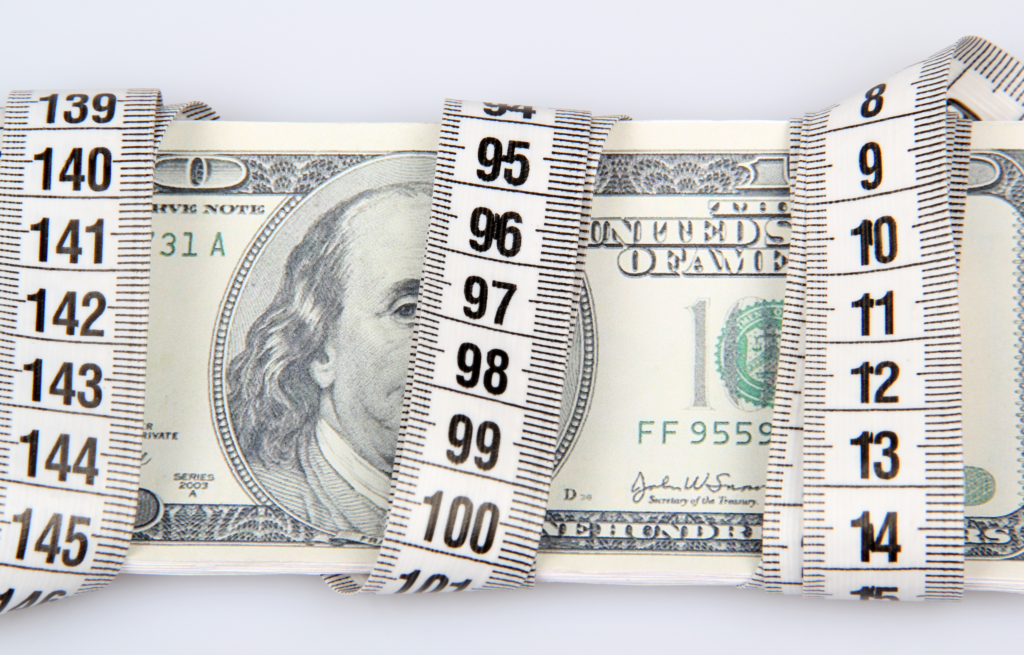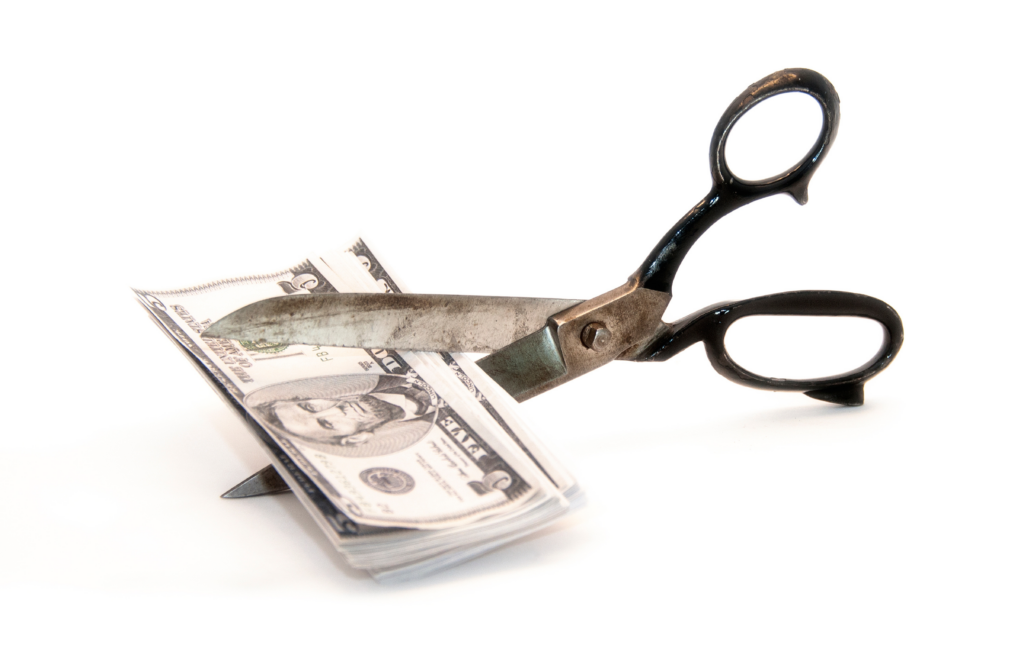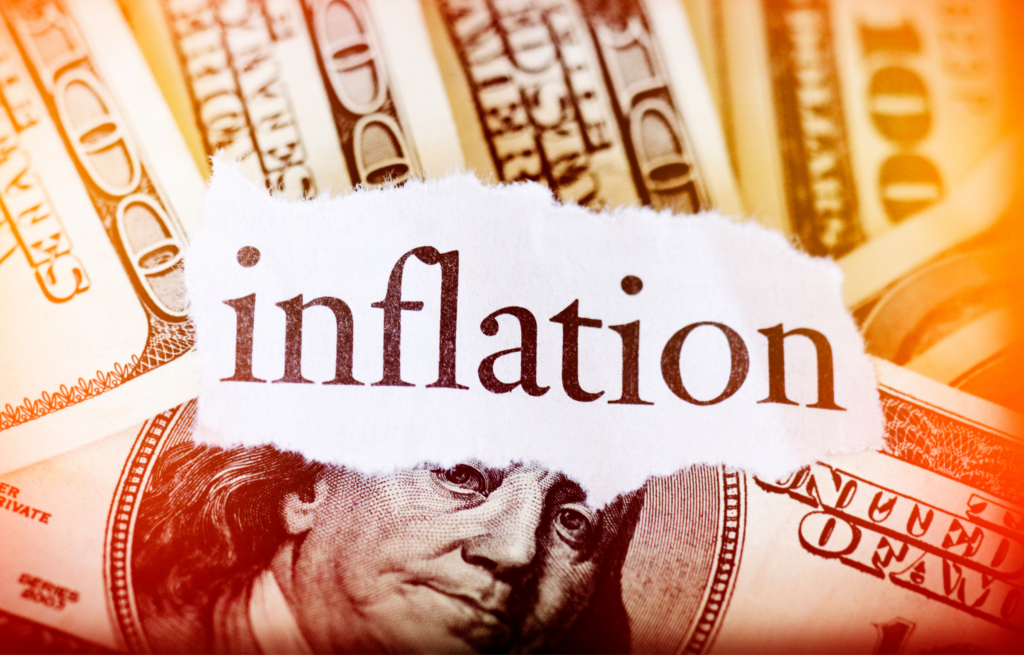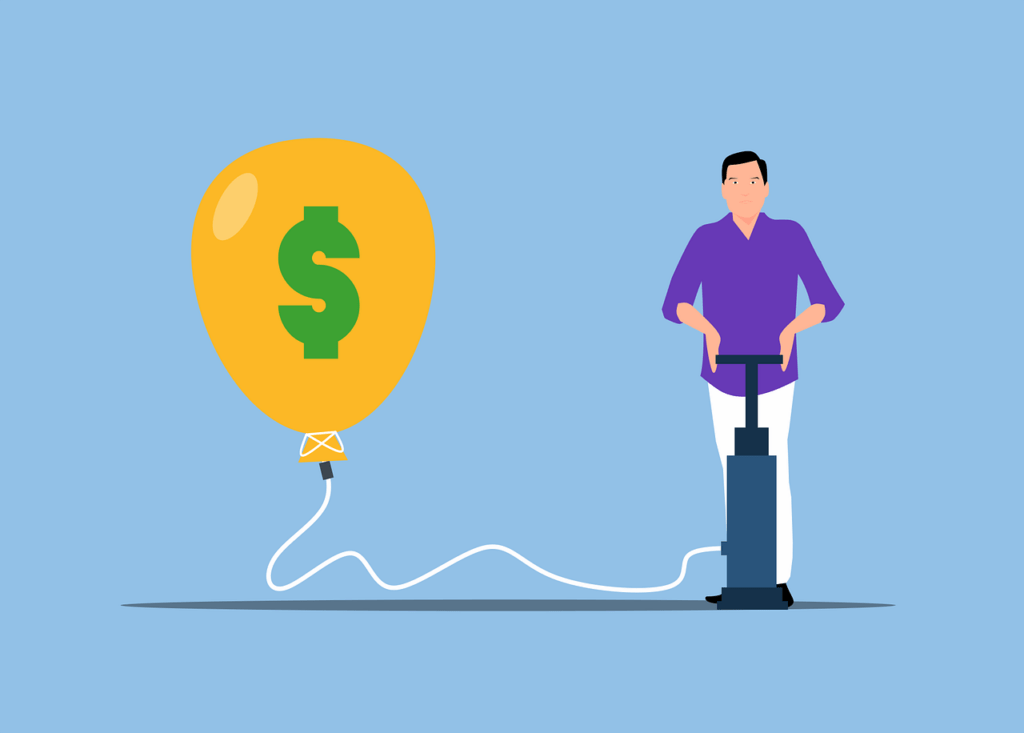“Inflation” has lingered heavily on the minds of Americans for the past three or four years, inducing fear in up-and-coming generations grappling to hold onto the hope of financial stability. As prices continue to rise, more and more Americans, especially Millennials and members of Gen Z, are vocalizing the “death of the American Dream.”
In fact, the Wall Street Journal found that 45% of survey respondents believe it was once true that if you work hard, you’ll get ahead (the driving factor of the American Dream), but not anymore.
Before doom and gloom overcome you, take a deep dive with me into the seemingly scary world of inflation. As both Hermione Granger and Albus Dumbledore would say, “Fear of a name increases fear of the thing itself.” So, without further adieu, let’s diminish unfamiliarity and boost your ability to manage the everchanging tides of Inflation.
What Is Inflation?
It can be jarring to hear that your grandpa bought his house for $11,000 and spent $0.31 on a gallon of gas in 1960. You’ve got to be kidding me, right?!
Before you start yelling at every senior citizen on the street, proclaiming how much easier they had it, remember that you’re looking at the effects of inflation.
To keep it simple, inflation is the increase in prices of a diversified set of goods and services in a period, usually a year.
What Causes Inflation?
There are many different types of inflation because there are many different causes. Knowing what type of inflation is at the forefront of an economic shift can help the Federal Reserve analyze data and respond accordingly.
Here are the three main types of inflation and their contributing factors.
Cost-push
This is when the cost of production rises, leading companies to raise prices for consumers in order to cover these expenses.
Demand-pull
There’s too much money and not enough to spend it on. The supply of goods and services cannot keep up with the demand, leading to higher prices for consumers.
Built-in
This is when workers ask for higher wages to maintain their standard of living, and businesses raise their prices to afford increased salaries. This is also known as the wage-price spiral since higher wages reinforce higher prices and the cycle repeats itself.

How Is Inflation Measured?
Inflation is measured differently depending on what aspects of the economy analysts are examining. However, two of the most commonly used measurement tools for inflation are the Consumer Price Index (CPI) and the Producer Price Index (PPI).
What Is The Consumer Price Index (CPI)?
The Consumer Price Index measures inflation monthly and annually, tracking national price changes in housing, food, transportation, medical needs, and other goods and services. These categories make up what we call the “market basket.” Think of it as the blueprint of typical consumer spending.
The higher the CPI, the higher the inflation. With higher inflation comes the threat of a higher cost of living: the money required to maintain a lifestyle in an area. If the average price of a basket of goods and services increases (inflation), it’s more expensive to maintain your lifestyle and basic expenses (cost of living). However, the cost of living varies heavily by location. For example, the cost of living in New York is 27% higher than the national average, according to RentCafe. For low-income families and individuals with fixed incomes, inflation creates an extremely challenging downward spiral; as their cost of living increases, they lack money to spend, and debt increases.

What Is The Producer Price Index (PPI)?
PPI stands for the Producer Price Index. This measurement focuses on the sellers of goods and services, tracking the changes in production and manufacturing costs. It’s less about the consumer and does not include sales tax and markups.
The PPI influences the CPI and inflation measurements that occur further along in the product consumption process. A high PPI indicates high costs for the producer, which boosts the price of the good or service for the consumer so the provider can profit (recall cost-push inflation, especially when supplies decrease but demand remains consistent).
What is Core Inflation?
Price fluctuations in certain areas such as food and energy are not abnormal and happen frequently. As a result, the inflation calculation that excludes these categories is referred to as “core inflation.” This is useful for calculating long-run inflation, which is helpful in policymaking since it changes less than the CPI.

Is Inflation Bad?
Yikes, so inflation is bad, right? Not always! It’s relatively natural and can be a good thing…when it’s controlled. The Federal Reserve System likes to keep inflation at around 2% annually. Why? Well, let’s rewind a little.
The less people spend money, the weaker the economy, and there is a strong link between inflation and spending power, which in turn affects the value of the dollar. For example. inflation causes money to be less valuable over time. If a dollar can buy you 4 gumballs today, but prices rise so that you can only buy 2 gumballs with a dollar a few months later, the value of the dollar has decreased over time.
If people believe that their money will have the same value or less in the future than it does now, there is more incentive to spend money than save it. More spending equals a stronger economy and an increase in wages and employment rates (businesses have more money to spend on employees).

Additionally, inflation is better than deflation. Deflation occurs when prices decrease, boosting the dollar’s value, and giving people more purchasing power. But wait! That doesn’t sound like a bad thing at all!
Here’s the kicker. A decrease in prices means a decrease in profit for companies, which can lead to layoffs and unemployment. If people don’t have an income, they’ll spend less, hurting the economy and the rate of production and demand. Additionally, interest and saving rates will lower to encourage spending, which is good for taking out a loan but not good for your savings. So, you see, lower prices may look good at first, but that’s just the tip of the iceberg.

How Does Inflation Effect Interest Rates?
Lower interest rates encourage people to borrow money. They are more willing to spend, which stimulates a better economy. If the Federal Reserve sees that we are spending money, but the demand for supplies cannot be met, there is a supply chain issue. This causes companies to raise prices to combat their lack of deliverables. As more and more companies make this switch, the cost of living and inflation increases.
The Federal Reserve can attempt to balance supply and demand and, in turn, control inflation, by raising interest rates as this makes people less likely to borrow and spend.

5 Ways To Combat Inflation
How do you maintain financial stability in light of inflation and fluctuating economic conditions? We’re so glad you asked. Here are five helpful strategies to cope with inflation.
(1) Use a Credit Card With Cash-Back Rewards
- If your credit card offers you cash back or points, take advantage of those benefits! These rewards keep more money in your pocket as you continue with your everyday spending. Check out 1166 FCU’s credit card solutions!
(2) Invest in the Stock Market
- From 1980 to 2015, the stock market was positive for 27 out of 36 years (75% of the time), according to Unifimoney. This tells us that investing is a relatively consistent and reliable financial decision. Additionally, your assets have the potential to yield a higher rate of return (averaging 10% per year) than the rate of inflation (currently 3.48%), combating rising prices.
- If you’re interested in investing but don’t know where to start, check out reputable investment companies such as Vanguard, Fidelity, or Robinhood.
(3) Adjust your Budget
- While it’s an answer everyone is expecting, adjusting your budget is a great way to manage your money in trying times, regardless of inflation. Controlling the controllable can relieve stress and give you greater peace of mind.
(4) Consider Fixed Interest Rates
- Fixed interest rates create consistency and predictability with how much you pay on loans and mortgages; You’re protected from inflation influencing your rate. However, variable interest rates fluctuate and may save you money if interest rates drop.
- Consider your goals and values before settling on a rate. For example: fixed rates for long-term loans offer better protection against future economic circumstances. On the other hand, variable rates may provide more savings and less risk for short-term loans.
(5) Advance Your Education and Skills
- When you enhance your education and skills, you have higher earning potential, increased job security, and increased adaptability to take on new roles. This is helpful during economic downturns where job stability is crucial.
How 1166 FCU Can Help!
While we may not have hit on ALL the nuances of inflation (trust me, there’s a lot), we hope you feel more confident in your understanding of the topic. For advice on action steps, credit card and saving solutions, or other financial services, contact our team today!


